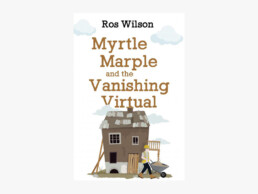Scottish Exam Results
Such a controversy! The Scottish Government battered into an apology and total backdown – and quite rightly too. If the reason many students’ grades were lowered was truly their post code, it is not surprising that the powers that be are humiliated. The First Minister admitted that ‘serious errors were made’.
A total of 133,762 individual results were adjusted by the Scottish Qualifications Authority (SQA) from the 511,070 initial estimates of grades that were submitted by teachers. Only 9,198 of the estimates were adjusted up. 124,564 were adjusted down. Almost all (96%) were adjusted by a whole grade. Fewer than 10,000 were raised.
The SQA felt that many teachers had been too generous in their estimates of grades.
One of the factors the SQA decided to use to decide whether a grade should be changed is the performance of the school over the previous four years. This was potentially a life-changing decision for a significant number of students. Students who had consistently achieved highly in school found their grades reduced to reflect their school’s previous performance rather than their own abilities.
Of particular concern was the disproportionate effect on students living in areas of economic disadvantage as SQA were influenced by their historical evidence that the poorer the area the less well students performed. In the most deprived areas, moderators reduced results sufficiently that the proportion of students getting A to C grades fell by 15 percentage points compared to the schools’ teacher estimates. In the most affluent areas, the drop was only by 7 points.
Nicola Sturgeon claimed, initially, that this step had been necessary to make the results credible, and that without this moderation system 85% of students in the most deprived areas would have passed Highers this years, as opposed to 65% in previous years.
My only comment would be, that this flattening of results through so called ‘moderation’ has gone on for many years. Without annual ‘flattening’ of scores to reflect history, perhaps a steady rise towards 85% might have been seen? We shall never know. However, hopefully, one good outcome of this tragic pandemic could be a proper re-examination and reform of the marking of our examination systems.
My own experience in education led to my underperforming in term time throughout school, yet mainly performing well in examinations. Had I been a student of the pandemic, I might never have been admitted to the profession of education. More on this in my next blog, following the release of the English results.
Myrtle Marple
I love this book! I had great fun writing both the first two books of this series – yes, the second has been finished as long as this first one – it just hasn’t gone through publishing yet. Why am I so keen, when I am truly proud of ‘Journeys’ and ‘Bonkers Boris’ cracks me up? I think it is because – secretly – Myrtle is me!
The house is a house I once lived in… the setting is a setting I once loved. The only things I never had are Myrtle’s gadgets – but I wish I had! The extraordinary relationship that develops between the twins and Myrtle is the heart of the series. The twins are so alike and yet so different… Dan (Daniella) is far the more sensible one, although far from afraid of going on an adventure, while Dom (Dominic) is much more of a risk taker, albeit with a touch of flatulence.
This unusual trio haven’t even met at the start of this first book and, when they do first meet there is some caution and a couple of clashes. However, when Myrtle’s precious virtual friend, Doogle, goes missing, they become a tightly knit team. Which is just as well, as Dom gets himself into quite a scrape.
This was the first book for children that I actually completed and submitted for publishing, and I was thrilled when Olympia accepted it. However, due to my insistence on receiving hard copy for proofing – I always used to proof on hard copy – the second proofing was lost by the British Post Office and the publishers started the process again. Consequently, Bonkers Boris Meets the Mayor sailed past Myrtle and pipped her to the post. And I stopped demanding hard copies!
The two series are not in competition of course, mainly because the target ages are quite different as demonstrated in their length, form and illustrations. Bonkers Boris is aimed primarily at six to ten year olds, while Myrtle’s main audience will be nine to twelve year olds, although with parents or teachers reading them to children, wider audiences will enjoy the stories.
So, much as I adore the disaster-defined Boris, Myrtle will always have a special place in my heart!



